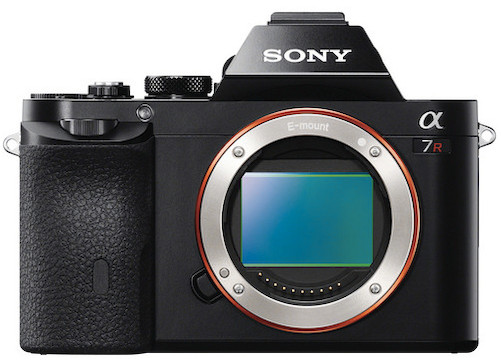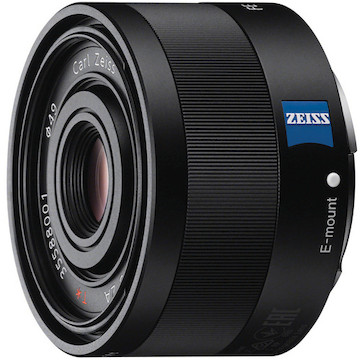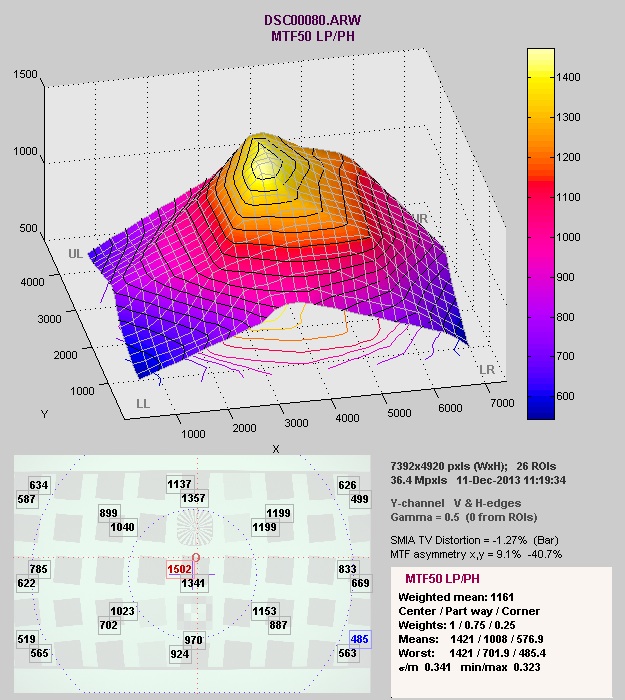Equipment
Sony A7R: A Rising Tide Lifts All the Boats?

I have to admit I didn’t get too worked up when the Sony A7 and A7R were released. The last time I wrote about Sony it was how there were so few lenses for the NEX system years after introduction. So now we’re going to a system requiring a whole new lens mount. Sure the camera’s specs were interesting. But the idea of yet another camera body good mostly for shooting lenses on adapters wasn’t very exciting. So I planned to ignore it.
But my friends over at Imaging-Resource / SLRGear.com were waxing poetic when they talked about their testing of the A7. Then they started claiming that the lenses were really good, too, and sent me some rather shocking test results. Plus, I will admit when it arrived I kind of liked the look and feel of the camera. It’s a very small camera for a full-frame, but with a nice deep grip that felt good in my overly large hands. Sort of a retro appearance. So even though we were a bit backed up, Aaron and I decided to at least run some some preliminary testing in our Imatest lab with the A7R.
Let me be clear – this isn’t an A7R review. Think of it more as a screening test to see if I was even interested in looking at it more seriously. For me, the lack of lenses with a newly released camera means going through several adapters and numerous lenses to see if I could make a reasonably useful kit. There are other options out there that would be a lot less trouble. So unless there was something about it to really impress me, I’d just skip it for now. If things were merely good, I wouldn’t be interested in looking further.
Results with the 35mm f/2.8 Sony Zeiss Lens

We received a reasonable number of A7R cameras in, but only a few copies of the Zeiss 35mm f/2.8 FE lens and none of the 55mm f/1.8 Sony Zeiss Sonnar FE that Rob Murray reviewed with such spectacular results. But what we had was what we had, so we mounted the 35mm FE to the A7R and ran a set of tests. Then we ran them again because when I first saw the results I thought “we had that stopped down somehow, no way it did that at f/2.8”. But it did.
To put this in some perspective, I’m going to do something that’s not really OK: compare numbers between systems. I don’t want to play camera wars, and these aren’t extensive comparisons. But I did want to show you why my jaw dropped when I saw the A7R/35mm f/2.8 numbers.
In this case we’re comparing very closely matched systems: the Sony A7R and Nikon D800e are both 36 megapixel, no-AA filter cameras and we’re processing raw images that (theoretically) have no sharpening or manipulation applied. Even so, please take this with a grain of salt because, well, we’re comparing numbers between systems and that adds variables.
Camera Lens Aperture shot MTF50 Center LP/IH MTF50 Avg LP/IH MTF50 Avg Corner Lp/IH
A7R 35mm f/2.8 FE f/2.8 1320 1175 695
A7R 35mm f/2.8 FE f/4 1420 1190 750
D800e 35mm f/1.4 G f/4 1150 1020 625
D800e ZF.2 50mm f/2 f/5.6 1260 1100 660
Just in case you missed that, the Sony A7R with 35mm f/2.8 lens shot at f/2.8 outresolved the Nikon D800e with either the Nikon 35mm f/1.4G shot at f/4 or the Zeiss 50mm f/2 shot at f/5.6. Stopped down to f/4 to even the playing field, the Sony was clearly higher. In fact, the only lens-camera combinations we’ve seen with that kind of MTF50 is the Zeiss Otus 55mm mounted to a D800e.
That did leave me with a question, though. Is the lens that great? Or is the camera that great? Or is it the combination?
A Few More 35mm Focal Length Tests
Unfortunately, the only other FE mount lens we had was the little variable-aperture kit zoom. It may be a pretty good lens, but I don’t test variable aperture kit zooms when I’m trying to decide how good a camera is. You’ve got to draw the line somewhere.
The next thing I know Aaron has a tray full of adapters and a bunch of lenses. I pointed out that we don’t test lenses on adapters. I use adapters for taking pictures, they’re wonderful for that. But when you generate test numbers there’s always a bit of tilt that makes the overall test numbers lower than they should be. So I told him we absolutely weren’t going to test lenses on adapters.
He pointed out that center numbers would still be accurate. And that most people shooting an A7R are going to be using adapters so there were some real-world reasons for looking at them. I countered that we’d have to test a number of adapters with each lens to find the most accurate one and that would take hours. He replied that we had some wide-angle lenses that needed optical adjustment and that’s what we’d be doing if we weren’t testing. Game, set, and match to Aaron. There’s nothing I hate more than optical adjustments on wide-angle lenses.
To make things as accurate as possible, we tested a number of copies of each lens on a number of copies of brand-name adapters and took the best combination to present below. Again, let me emphasize that adapters that are perfectly fine for taking pictures (all of the ones we tried) aren’t usually fine for generating testing numbers. A bit of field tilt, for example, makes no difference in a 3-dimensional picture. (If the grass on the left side is in best focus a foot further away than the grass on the right side, it really makes no difference. If the focus on the test chart is a two inches different between the right side and the left side, the numbers on one side are awful.)
So what I’m showing you is the best lens-adapter-camera combinations we could find – but please realize that especially off-axis, the numbers we get from adapters are more variable than what we would see from a camera with native lenses mounted.
(As an aside, people always ask ‘what adapter brand is best’. It’s not a brand. We use mostly Voigtlander, Metabones, and MTF adapters, which we think have good quality overall. But with 4 interfaces — one lens, 2 adapter, one camera — there is inevitable variation. Adapters are like sausage. If you love sausage, you definitely do not want to know too much about how it is made. Same with adapters. The quality control isn’t what you hope it is.)
Canon 35mm f/2 IS
Since we had tested the Sony-Zeiss 35mm we thought we’d try a couple of other 35mm lenses. We started with the Canon 35mm f/2 IS lens – since we have extensive data testing this lens on Canon 5D II cameras we thought it would be interesting to see how it fared on a higher resolution sensor. We tried a few copies of the Metabones Mk III EF to NEX adapter and used the results from the best lens-adapter combination. The table below compares the results with this lens on an A7R and a 5D II.
Ctr MTF50 Avg MTF50 Avg Corner MTF50
5DII2@f/2 840 715 400
5DII@f/4 1045 870 570
A7R@f/2 1050 875 385
A7R@f/4 1400 1160 560
Obviously the A7R brings out some dramatic capabilities in the center of the 35mm f/2 IS lens that the 5D Mk II can’t show us. But the amazing performance doesn’t seem to carry out to the corners.
I think it’s important to look at what’s going on in the corners, so I’m going to go a bit geeky on you for a minute and show you actual Imatest printouts for the 35mmf/2 IS on the A7R. Below are the printouts at f/2 followed by f/4.


The top image, at f/2, demonstrates the little bit of tilt that is still present with our best lens-adapter match. The lower left corner is quite good, the upper right rather weak, and the other two corners in-between. This would be barely noticeable in a picture. But it makes the corner resolution numbers in testing quite questionable. Especially when you only see the average number like the table above.
In the second image, shot at f/4, the increased depth of field seems to make up for the tilt affecting the corners. But if you look carefully there is still a significant difference in the numbers for vertical and horizontal resolutions, particularly in the middle third of the lens. Astigmatism in the lens could cause something like this, too, but this is a lens we know doesn’t have much astigmatism.
So we can take away that the resolution in the center of the Canon lens adapted to the A7R is awesome. The corners are very good, but not spectacular. Why the difference between center and corners? Could be adapter. Could be sensor microsensors. Could be chromatic aberration. Could be something done during in-camera processing of raw images (these are raw shots, so no jpg conversion is taking place). In other words, I don’t know. But as with all unexpected results, we repeated the test and it was consistent.
Zeiss ZE 35mm f/2
As long as we were shooting at 35mm we thought we’d try the Zeiss 35mm f/2 on the A7R. Even wide open at f/2 the numbers were pretty spectacular. Again, in the table below we’ll compare the ZE 35mm f/2 on the Canon 5DII and the Sony A7R.
MTF50 Ctr MTF50 Avg MTF50 Avg Corner
5D Mk II 875 770 570
A7R 1235 1025 600
The same pattern shows again; dramatic improvement in MTF50 in the center with the A7R compared to what we would see on a 5D II, but only a slight improvement in the corners. In this set the adapter gave us quite even corners, although, again, we did have some astigmatism off-axis that pulled the numbers down a bit.
At this point I did wonder if my choice of 35mm lenses might be part of the corner issues we were seeing. There are plenty of reports that wide-angle lenses have problems in the corners on cameras with short flange-to-sensor distances like the A7R. So I did want to try at least one set of longer lenses to see if the pattern continued.
A Set of 50mm Lenses
I chose a couple of 50mm lenses for the next test, mostly because I wanted to try at least one Leica lens. (Wide angle Leica lenses on the A7R are another topic entirely, and too big of a topic for me.) We had a Leica 50mm f/2 APO-SummicronASPH handy, and thought the Zeiss ZE 50mm f/2 Makro Planar would make a nice comparison. We used a Voigtlander M to NEX adapter for the Leica and another Metabones Mk III for the ZE. (For both I’m using the best results of 4 adapters tried.)
MTF50 Ctr MTF50 Avg MTF50 Avg Corner
Leica @ f/2 A7R 1365 1205 680
Leica @ f/2.8 A7R 1550 1200 710
Zeiss @ f/2 1335 910 410
Zeiss @ f/2.8 1410 960 440
Leica @f/2 M240 1075 970 725
Leica @f/2.8 M240 1135 1015 840
The most interesting comparison, here, I think is the Leica 50mm lens on the A7R and on its native Leica 240 camera. In the center, the A7R has much higher resolution than the Leica 240; it’s 36 megapixels versus 24, after all. But the corner numbers are more interesting. Here the Leica camera has resolution slightly higher than the A7R.
Given that the 50mm is not a retrofocus design, there shouldn’t be major corner issues with the A7R. Of course, there’s no way to rule out an effect from the adapter, although this was the best result with 4 adapters (all on the same lens, though, we only had one copy in stock).
Leica has said a lot about how their camera’s microlenses are angled in the edges and corners, maximizing the sensor’s performance with their own lenses. This is a very isolated finding of one lens on one camera, but it does seem to support that.
Conclusion
I’m not anti-adapter, by any means, and I wouldn’t hesitate to shoot a good lens on an adapter with the A7R. It’s important to bear in mind that numerical testing differences don’t always equate to significant picture differences. But there do seem to be some limitations.
If I were to make a quick summary:
- The A7R delivers amazing resolution. At least as good as a Nikon D800e.
- The two Sony-Zeiss prime lenses (the 35mm we tested, and the 55mm tested by SLRgear.com) are excellent. Hopefully other native-mount lenses will also be excellent.
- Other-brand, standard-range (35mm and up) shot on a well-matched adapter give superb center resolution, better than you would get on the native mount camera, unless that camera is a D800e. Corner resolution is very good, although less than amazing.
- Given past experience, and several early reports, shooting lenses wider than 35mm on an adapter is going to be a bit more challenging. I doubt we’ll be able to make too many generalizations. Rather each lens will have to be evaluated on the A7R to see how it performs.
My own conclusion is pretty simple: I need to spend some time investigating the A7R and it’s lenses. This is a small test group of lenses, but every single one resolved better in the center on the A7R than it did on any other camera. This is going to be attractive to a lot of people who have been lusting for a high resolution sensor but didn’t have one available in their lens mount.
There are plenty of questions remaining, of course. The corner numbers may be just an artifact of testing on a flat, two-dimensional field. In real 3-dimensional photography things might be much better. This alone is going to require a lot of information by numerous testers before we get a good handle on it. It may go away when we get to slightly longer focal lengths. It may be something seen in only a few lenses and we just happened to pick those to test.
Even if the laboratory corner numbers reflect photography reality, though, remember the corners on the A7R are (except for the Leica lens) at least as good, if not somewhat better than the native camera mount. So the rising tide of the A7R sensor lifts all the boats in the center for sure. I’m still not certain about the corners.
So while I’m not ready to jump on the “this camera is going to change everything” bandwagon just yet, it certainly has the potential to change some things. Assuming some good third-party lenses become available in FE mount soon, and Sony continues to broaden the lens lineup with excellent glass instead of 10X variable aperture superzooms, it may change a whole lot of things.
Roger Cicala and Aaron Closz
Lensrentals.com
December, 2013
Author: Roger Cicala
I’m Roger and I am the founder of Lensrentals.com. Hailed as one of the optic nerds here, I enjoy shooting collimated light through 30X microscope objectives in my spare time. When I do take real pictures I like using something different: a Medium format, or Pentax K1, or a Sony RX1R.
-
Jonathan Slack
-
Joachim / CH
-
Joachim / CH
-
anurag agnihotri
-
John
-
derek
-
Richard
-
CarVac
-
Max
-
Max
-
CarVac
-
Max
-
Matthew Youngberg
-
Max
-
Matt
-
jubi
-
William Jaeger
-
James Scholz
-
Erik Magnuson
-
Gary Morris
-
Samuel H
-
gary
-
Ingo
-
Kerry
-
Chris
